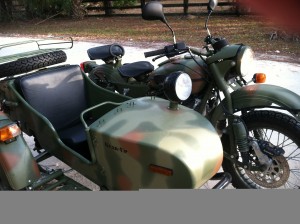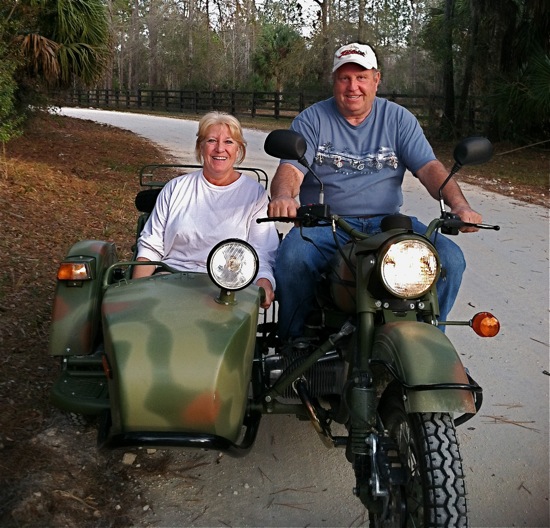For eleven months I would parlay the winding trails of Cambodia’s Quang Tri Province, remaining sightless just off their perimeters, all the while observing movement and transportation of supplies and equipment of the Soviets along with their assistance to the Cambodian rebels. While “in country”, I was to garner information for recon purposes. When out in the bush, administering to my assignments I would often marvel at the motorcycle and accompanying sidecars traversing the highlands, taking Russian field generals to various supply depots, and criss-crossing adjacent vectors in that Southeastern Asian hellhole. For those eleven months, it was bittersweet at its worst, falling in love with a machine that cavorted Soviet leaders who were eventually marked for erasure, by hidden snipers and our honed marksmanship. The distinct whirr of the air-cooled, four-stroke, flat twin cylinder engines would notify us of their imminent arrival, prompting me to seek cover either in the tallest of trees or well hidden in the brush at subterranean levels. Nevertheless, I fell in love with those cycles and yearned to learn more about the Russian Ural. I knew that if I made it stateside, one day I would possess one of these beauties. And here we are, almost forty years later, and Robin and I are adorning a replica of that original M72. Today its called the M70 and is based on the Retro model. It is painted in olive drab, the sidecar has a machine gun mount and its tonneau cover is made of canvas similar to the one used on the M72. Just like the M72 it also includes a spare wheel and shovel. The tear drop gas tank is decorated with a replica of the first factory badge (circa 1956). The motorcycle features a tractor style seat and luggage rack on the rear fender.
The Ural story begins in 1939, during the USSR’s pre-World War II planning against the German Third Reich. Josef Stalin ordered the military to prepare all areas of operation, including the ground forces that would defend the Russian motherland. The M72 was essentially a copy of a BMW R71, the best sidecar motorcycle of the time. A rugged, all terrain motorcycle, capable of carrying three people and heavy loads, was ideal for mobile troops. Five units were covertly purchased through intermediaries in neutral Sweden and smuggled to Russia. Soviet engineers in Moscow busily dismantled the BMWs. The first M72’s built by the Irbit Factory in the Ural mountains outside Siberia and were sent to the front lines in February of 1942 and were used by the troops in the Battle of Stalingrad. Over the course of World War II, 9,799 M-72 motorcycles were delivered to the front for reconnaissance detachments and mobile troops. In the late 1950s, the Irbit Motorcycle Works (IMZ) began to build Urals for domestic, civilian consumption. The popularity of the outfits grew steadily among Russians, and in the 1960s, the plant was turned over to full non-military production.
This story of the history of the Russian Ural is all true. What is not is the bullshit that I conjured up at the onset of this post to draw your attention. This motorcycle actually belongs to Dawn, whose in-laws live at the end of the river road that Robin and I walk each day on a saunter to points north on the Suwanee River. Dawn was kind enough to allow us to experience the feel of this machine and snapped a photo of us for posterity. I hope you enjoyed this entry.




